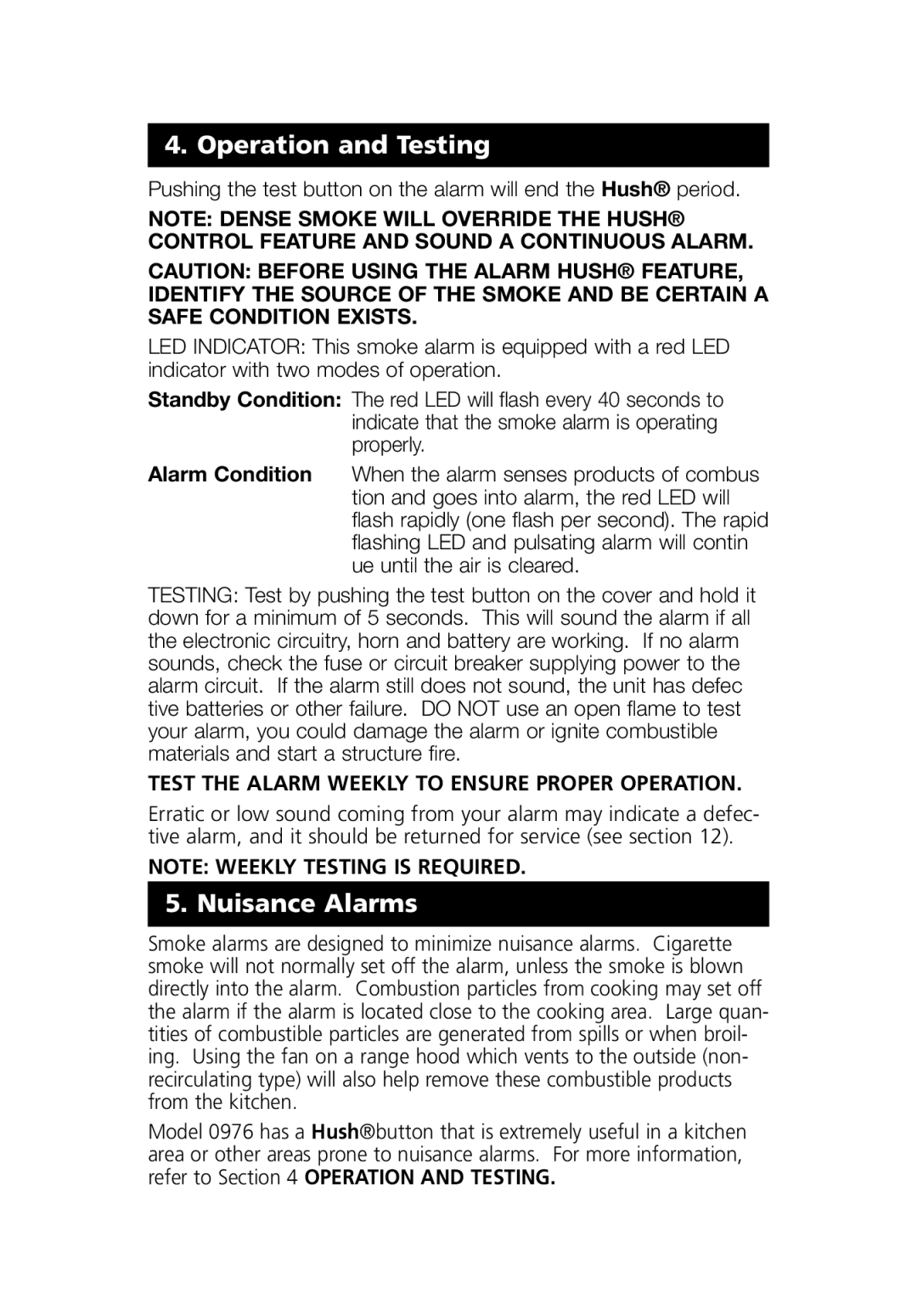
4. Operation and Testing
Pushing the test button on the alarm will end the Hush® period.
NOTE: DENSE SMOKE WILL OVERRIDE THE HUSH® CONTROL FEATURE AND SOUND A CONTINUOUS ALARM.
CAUTION: BEFORE USING THE ALARM HUSH® FEATURE, IDENTIFY THE SOURCE OF THE SMOKE AND BE CERTAIN A SAFE CONDITION EXISTS.
LED INDICATOR: This smoke alarm is equipped with a red LED indicator with two modes of operation.
Standby Condition: The red LED will flash every 40 seconds to indicate that the smoke alarm is operating properly.
Alarm Condition When the alarm senses products of combus tion and goes into alarm, the red LED will flash rapidly (one flash per second). The rapid flashing LED and pulsating alarm will contin ue until the air is cleared.
TESTING: Test by pushing the test button on the cover and hold it down for a minimum of 5 seconds. This will sound the alarm if all the electronic circuitry, horn and battery are working. If no alarm sounds, check the fuse or circuit breaker supplying power to the alarm circuit. If the alarm still does not sound, the unit has defec tive batteries or other failure. DO NOT use an open flame to test your alarm, you could damage the alarm or ignite combustible materials and start a structure fire.
TEST THE ALARM WEEKLY TO ENSURE PROPER OPERATION.
Erratic or low sound coming from your alarm may indicate a defec- tive alarm, and it should be returned for service (see section 12).
NOTE: WEEKLY TESTING IS REQUIRED.
5. Nuisance Alarms
Smoke alarms are designed to minimize nuisance alarms. Cigarette smoke will not normally set off the alarm, unless the smoke is blown directly into the alarm. Combustion particles from cooking may set off the alarm if the alarm is located close to the cooking area. Large quan- tities of combustible particles are generated from spills or when broil- ing. Using the fan on a range hood which vents to the outside (non- recirculating type) will also help remove these combustible products from the kitchen.
Model 0976 has a Hush®button that is extremely useful in a kitchen area or other areas prone to nuisance alarms. For more information, refer to Section 4 OPERATION AND TESTING.
